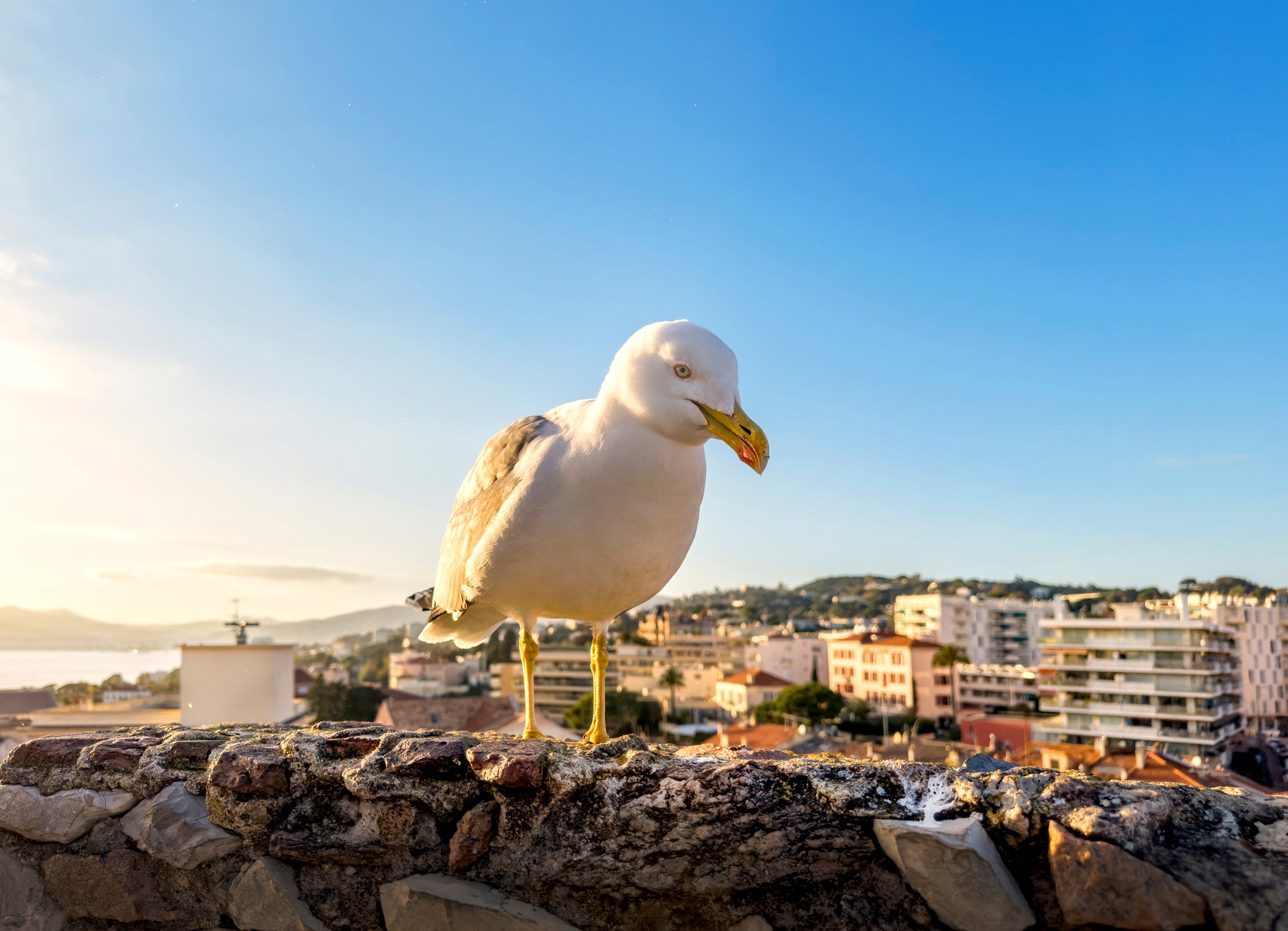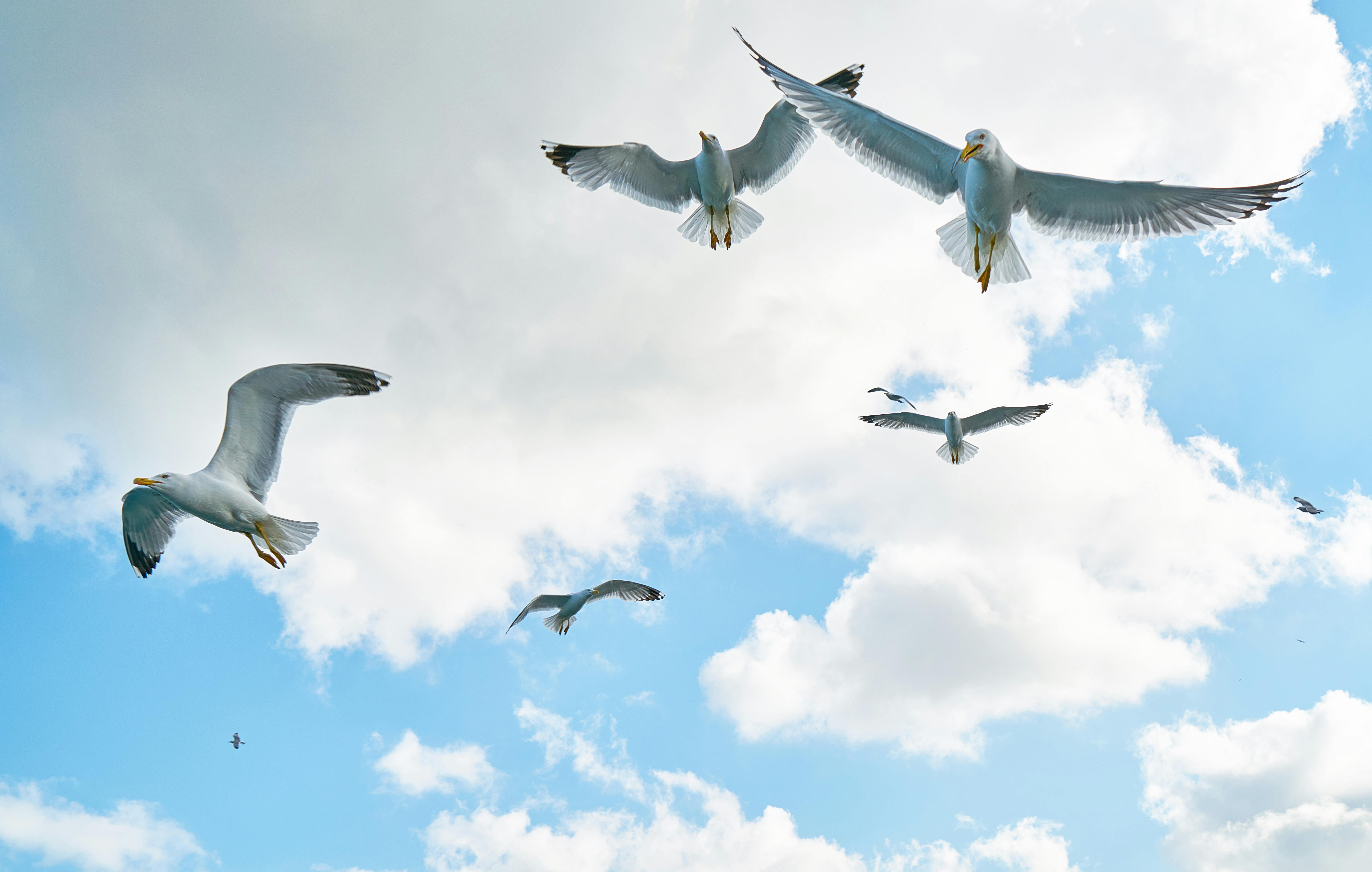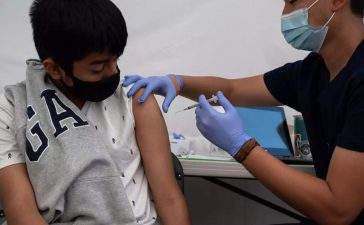A seagull eyeing your lunch or ice cream is unlikely to try to steal it if not part of a flock, scientists have found.
Due to an instinct known as neophobia, which means a fear of the unknown, scientists have discovered that herring gulls are mostly reluctant to attack when on their own.
But, according to researchers at Ghent University, this fear diminishes when seagulls are part of a flock – potentially putting your food at greater risk.

In a study published in the Royal Society Open Science journal, scientists carried out experiments involving a group of 54 seagulls they had reared from hatching.
In order to gauge how quickly the gulls would take to approach their food if faced with an unfamiliar object nearby, the scientists placed a range of items – a multicoloured ball, a bucket, brush, folder and jerrycan – next to the gulls’ food supply. Some of these objects were familiar to the birds and others were new to them.
They found that, when alone, the gulls took an average of 9.81 seconds to approach their food bowl when faced with an unfamiliar object – compared with just 3.52 seconds when in a group.
Notably, 24 of the gulls did not eat at all when alone and faced with an unfamiliar object.
The scientists also found that the birds were willing to spend more time near their food when in a group than those on their own. Lone gulls spent an average of just 38.8 seconds near their food, compared with 111.8 seconds when in a group – while 16 birds did not approach their food at all.

The study states: “Individuals tested in groups were quicker to eat and spent more time near a novel object than individuals tested alone.
“The results of our study suggest that the presence of group members reduces perceived individual risk, allowing individuals to behave less cautiously.”
Noting that “each bird likely perceives the risk to be shared by the group”, the authors said their findings were consistent with previous studies showing that social animals often rely on the presence of the group to make quicker decisions and engage in potentially risky situations.
An accompanying release from the Royal Society added: “When confronted by a gull after your chips it might be best to catch them one-on-one.”
While there may be some comfort in the findings that a lone seagull could pose less of a threat of theft, a previous study has suggested that gulls actually prefer food that they have seen being handled by humans, as opposed to food left lying unattended.
Although in a further possible line of defence, an earlier study suggested that staring at a seagull could help to deter it from trying to take your food.
Scientists at the University of Exeter found that gulls took an average of 21 seconds longer to approach a bag of chips if they could see they were being watched, with just 27 out of 74 birds observed being too cautious to take a chip when a human was nearby.










